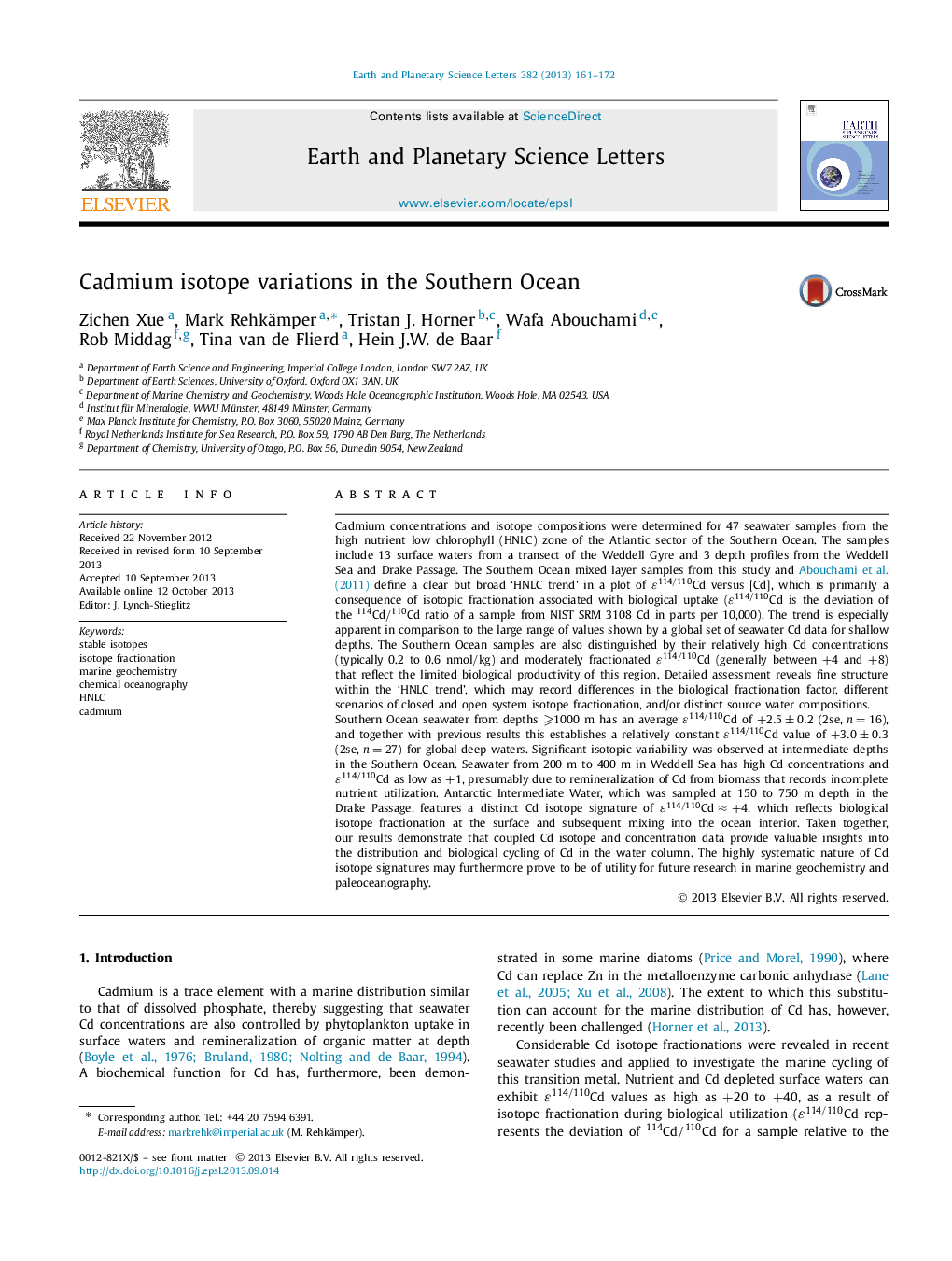| کد مقاله | کد نشریه | سال انتشار | مقاله انگلیسی | نسخه تمام متن |
|---|---|---|---|---|
| 6429982 | 1634774 | 2013 | 12 صفحه PDF | دانلود رایگان |
- New Cd isotope data presented for surface waters and depth profiles from Southern Ocean.
- Cd cycling in the Southern Ocean HNLC regime generates distinct Cd isotope signatures.
- Cd isotope variations reflect differences in marine biogeochemical conditions and processes.
- Cd isotopes aid understanding of marine Cd cycle and of potential value for paleoceanography.
Cadmium concentrations and isotope compositions were determined for 47 seawater samples from the high nutrient low chlorophyll (HNLC) zone of the Atlantic sector of the Southern Ocean. The samples include 13 surface waters from a transect of the Weddell Gyre and 3 depth profiles from the Weddell Sea and Drake Passage. The Southern Ocean mixed layer samples from this study and Abouchami et al. (2011) define a clear but broad 'HNLC trend' in a plot of εCd114/110 versus [Cd], which is primarily a consequence of isotopic fractionation associated with biological uptake (εCd114/110 is the deviation of the 114Cd/110Cd ratio of a sample from NIST SRM 3108 Cd in parts per 10,000). The trend is especially apparent in comparison to the large range of values shown by a global set of seawater Cd data for shallow depths. The Southern Ocean samples are also distinguished by their relatively high Cd concentrations (typically 0.2 to 0.6 nmol/kg) and moderately fractionated εCd114/110 (generally between +4 and +8) that reflect the limited biological productivity of this region. Detailed assessment reveals fine structure within the 'HNLC trend', which may record differences in the biological fractionation factor, different scenarios of closed and open system isotope fractionation, and/or distinct source water compositions.Southern Ocean seawater from depths ⩾1000 m has an average εCd114/110 of +2.5±0.2 (2se, n=16), and together with previous results this establishes a relatively constant εCd114/110 value of +3.0±0.3 (2se, n=27) for global deep waters. Significant isotopic variability was observed at intermediate depths in the Southern Ocean. Seawater from 200 m to 400 m in Weddell Sea has high Cd concentrations and εCd114/110 as low as +1, presumably due to remineralization of Cd from biomass that records incomplete nutrient utilization. Antarctic Intermediate Water, which was sampled at 150 to 750 m depth in the Drake Passage, features a distinct Cd isotope signature of εCd114/110â+4, which reflects biological isotope fractionation at the surface and subsequent mixing into the ocean interior. Taken together, our results demonstrate that coupled Cd isotope and concentration data provide valuable insights into the distribution and biological cycling of Cd in the water column. The highly systematic nature of Cd isotope signatures may furthermore prove to be of utility for future research in marine geochemistry and paleoceanography.
Journal: Earth and Planetary Science Letters - Volume 382, 15 November 2013, Pages 161-172
